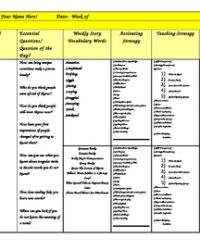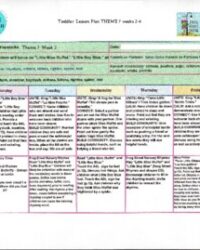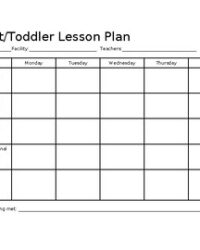In the dynamic world of education, ensuring every student grasps the concepts taught is paramount. That’s where formative assessment steps in, acting as a crucial compass guiding both teachers and learners. It’s not just about giving tests; it’s about a continuous feedback loop that helps identify learning gaps in real time and allows for immediate instructional adjustments. Imagine knowing exactly what your students understand and where they might be struggling, even before a formal test. This proactive approach is transformative, moving education from a one-way street to a vibrant, interactive journey.
But how do you seamlessly weave this powerful strategy into your daily lesson plans without feeling overwhelmed? The answer often lies in structure and clarity. A well-designed formative assessment lesson plan template can be your best friend, providing a framework that ensures these vital checks and balances are integrated naturally, rather than as an afterthought. It simplifies the process of planning for meaningful learning experiences, making sure that feedback isn’t just given, but actively used to propel learning forward for everyone in the classroom.
Understanding the Core of Formative Assessment in Lesson Planning
Formative assessment is fundamentally different from summative assessment. While summative assessments measure what students have learned at the end of a unit or course, formative assessments are ongoing processes that monitor student learning during instruction. They provide immediate, actionable feedback to both students and teachers. Think of it as a GPS for learning: it tells you if you’re on the right track, if you need to reroute, or if you’ve arrived at your destination.
Integrating formative assessment into your lesson planning isn’t just a good idea; it’s essential for responsive teaching. By embedding these checks directly into your lessons, you create opportunities to gather evidence of learning as it happens. This evidence then informs your next instructional steps. Did most students get it? Great, move on. Are many struggling with a specific concept? Time to re-teach or try a different approach. This fluid, adaptive teaching is what truly caters to individual student needs.
The benefits extend beyond just informing instruction. For students, formative assessments demystify the learning process. They learn what they know, what they don’t know, and how to close that gap. It fosters a growth mindset, encouraging them to see mistakes as opportunities for improvement rather than failures. For teachers, it’s a powerful tool for self-reflection on teaching effectiveness and a clear pathway to differentiation, ensuring that all students, regardless of their starting point, have the support they need to succeed.
To really make this process efficient and effective, having a systematic way to plan for these moments of assessment is key. This is where a dedicated formative assessment lesson plan template becomes indispensable. It helps you proactively think about how you will check for understanding, what kind of evidence you’ll look for, and how you’ll respond to what you discover, all before you even step into the classroom.
Key Elements to Include in Your Formative Assessment Lesson Plan Template
- Clear Learning Objectives: What specific knowledge or skills should students acquire during this lesson?
- Formative Assessment Activities: Which specific activities will you use to gauge understanding (e.g., exit tickets, quick polls, think-pair-share, short quizzes)?
- Criteria for Success: What does ‘success’ look like for each learning objective? How will you know students have met it?
- Feedback Mechanisms: How will you provide timely and constructive feedback to students based on their performance?
- Next Steps for Instruction: What actions will you take if students demonstrate understanding, or if they struggle?
Practical Strategies for Implementing Formative Assessments
- Questioning Techniques: Use open-ended questions that require more than a yes/no answer.
- Observation: Pay close attention to student engagement, participation, and non-verbal cues.
- Peer and Self-Assessment: Empower students to evaluate their own and their peers’ work using rubrics.
Designing Your Effective Formative Assessment Lesson Plan Template
Creating your own formative assessment lesson plan template doesn’t have to be complicated. The goal is to build a structure that prompts you to consider the “how” of checking for understanding, not just the “what” of teaching. Start by thinking about the consistent elements that make up a strong lesson and then deliberately insert sections for formative assessment. It should be flexible enough to adapt to different subjects and grade levels, yet robust enough to ensure no critical step is missed.
A truly effective template guides you through the process of aligning your assessment methods directly with your learning objectives. It encourages you to think about what evidence you’ll collect to show students are mastering the content, and how you’ll use that evidence to inform your teaching. This includes planning for specific questions, quick activities, or observation points. The more intentional you are in the planning phase, the smoother the execution will be during the lesson itself, leading to more responsive and effective teaching.
Ultimately, a standardized formative assessment lesson plan template helps streamline your planning process, ensuring that the valuable practice of real-time feedback is never overlooked. It helps you articulate not just what you will teach, but how you will ensure that teaching is actually leading to learning. This systematic approach saves time in the long run and helps you focus your energy on what truly matters: student comprehension and growth.
- Lesson Title and Subject Area
- Learning Objectives (measurable and specific)
- Materials Needed
- Lesson Procedure (step-by-step)
- Formative Assessment Strategy/Tool
- Expected Student Responses/Evidence of Learning
- Feedback Plan (how and when feedback will be provided)
- Differentiation/Support for Varied Learners
- Anticipated Teacher Adjustments Based on Assessment Data
Embracing the intentional integration of formative assessment into every lesson dramatically enhances the learning experience for students. It transforms the classroom into a responsive environment where teaching is constantly refined based on real-time insights into student comprehension. This continuous loop of teaching, assessing, and adjusting creates a powerful pathway to deeper understanding and mastery for every learner.
By consistently applying a structured approach to your lesson planning, you empower yourself to be a more agile and effective educator. The payoff isn’t just improved test scores, but a classroom where students feel seen, heard, and supported in their individual learning journeys, fostering a lifelong love for discovering new things and growing their capabilities.


